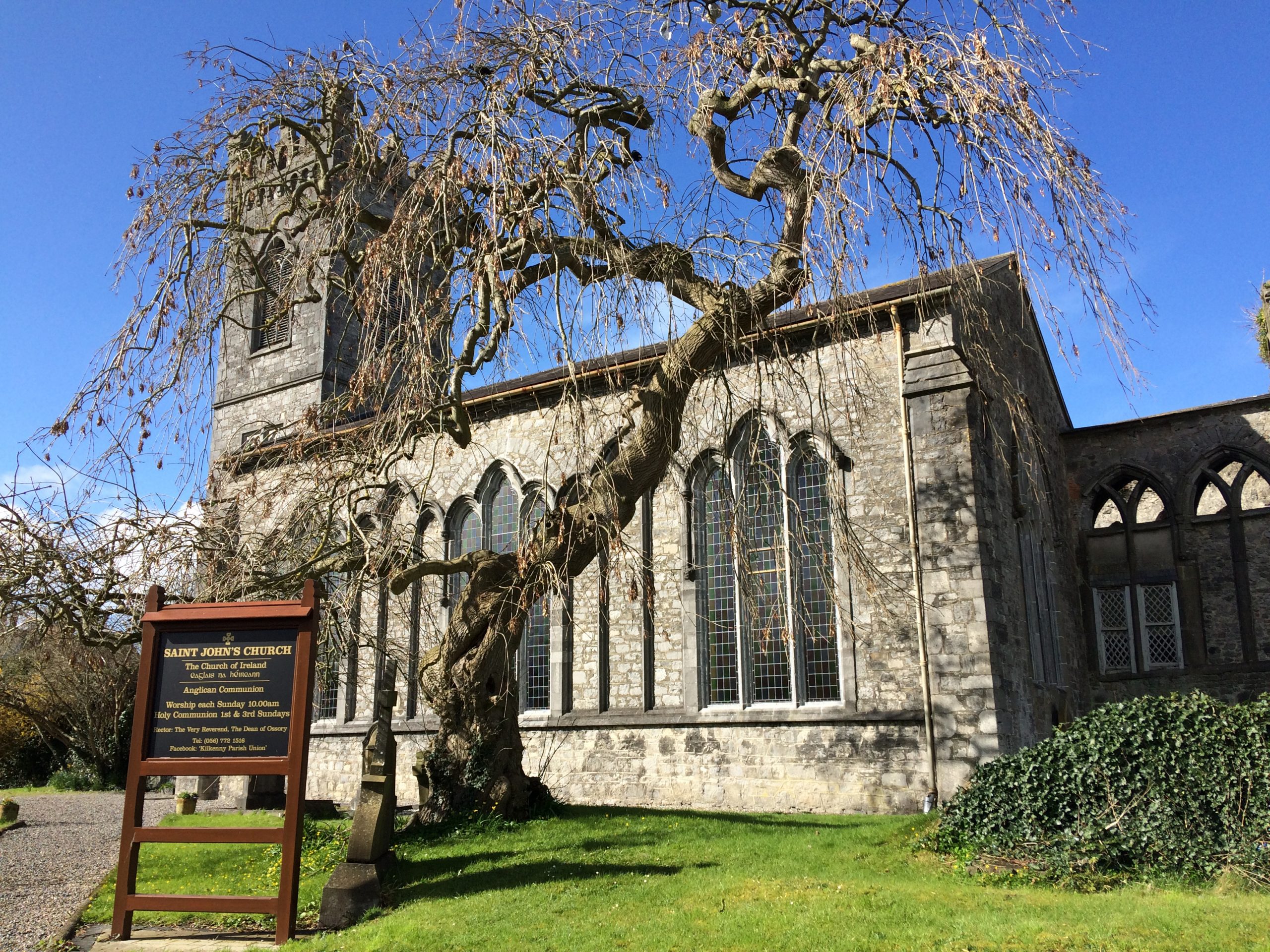ST JOHN’S CHURCH, JOHN STREET, KILKENNY
Published in Gems of Architecture, Issue 1 (January/February 2023), Volume 31By Damian Murphy
The origins of St John’s Church date back to 1290, when, according to the Liber Primus Kilkenniensis, Mass was first celebrated at the altar of the new Lady Chapel adjoining the choir of the Augustinian Priory of St John the Evangelist (1211). The Lady Chapel was renowned for the uninterrupted sequence of triple lancets running its entire length and, over time, earned the soubriquet ‘the Lantern of Ireland’. Dissolved in 1540 and granted to the Corporation of Kilkenny in 1541, the priory was briefly occupied by Jesuits in the 1640s before it entered a period of terminal decline. A substantial portion of the site was cleared in 1698 to make way for infantry barracks, and the subsequent demolition of the nave and tower in 1780 meant that by 1800, when the idea of adapting the ruins as a parish church was first mooted, the choir and Lady Chapel were the sole survivors of a site that once rivalled its Kilkenny cousin in Kells in size and architectural significance.
The architect of the new church, William Robertson (1770–1850), entered the scene in 1813 when he commissioned a series of sketches of the ruins for a proposed book illustrating ‘every building of antiquarian interest in the County of Kilkenny’. The book never materialised but one of the views was published and ‘respectfully inscribed to The Right Revd. the Lord Bishop of Ossory’. The view and its dedication point to a piece of propaganda, the architect drawing the attention of the highest authority in the diocese to the significance of the site and cautioning against its potential destruction. It may be no coincidence that figures are shown only in the choir, for, when invited by the select vestry to submit plans in 1815, Robertson proposed the wholescale reconstruction of the architecturally inferior choir and the ‘light touch’ adaptation of the Lady Chapel as a depository for the funerary monuments then scattered across the site.
The proposal was rejected not only owing to costs but also, on the evidence of notes kept by Robertson, on account of the fragile condition of the Lady Chapel, which was found to be leaning out of the perpendicular by fourteen inches and constructed ‘of many small stones … render[ing] the work less enduring’. The shell was ‘taken down’ in 1817 and in its recreation was modified for improved stability, with two sets of the triplet lancets being filled with masonry. The east window, originally 29ft high, was reduced ‘to less than half its original size’. The brilliance of ‘the Lantern’ may have been dimmed but the interior is still filled with light on even the dullest of days.
Accounts of the appearance of the original tower proving unreliable (sketches from the 1790s depicted it variously as slender and plain or stout and pinnacled), Robertson produced a version broadly in line with the contemporary Board of First Fruits house style but set apart by eye-catching finials resembling flame-topped obelisks. Sadly, these have been lost.
Set behind a high railed wall on a busy narrow street, the charms of St John’s Church can pass largely unnoticed, but stop awhile—a little time spent in its company yields many rewards for admirers of our architectural and archaeological heritage.
Damian Murphy is Architectural Heritage Officer, NIAH. Series based on the NIAH’s ‘building of the month’, www.buildingsofireland.com.

















